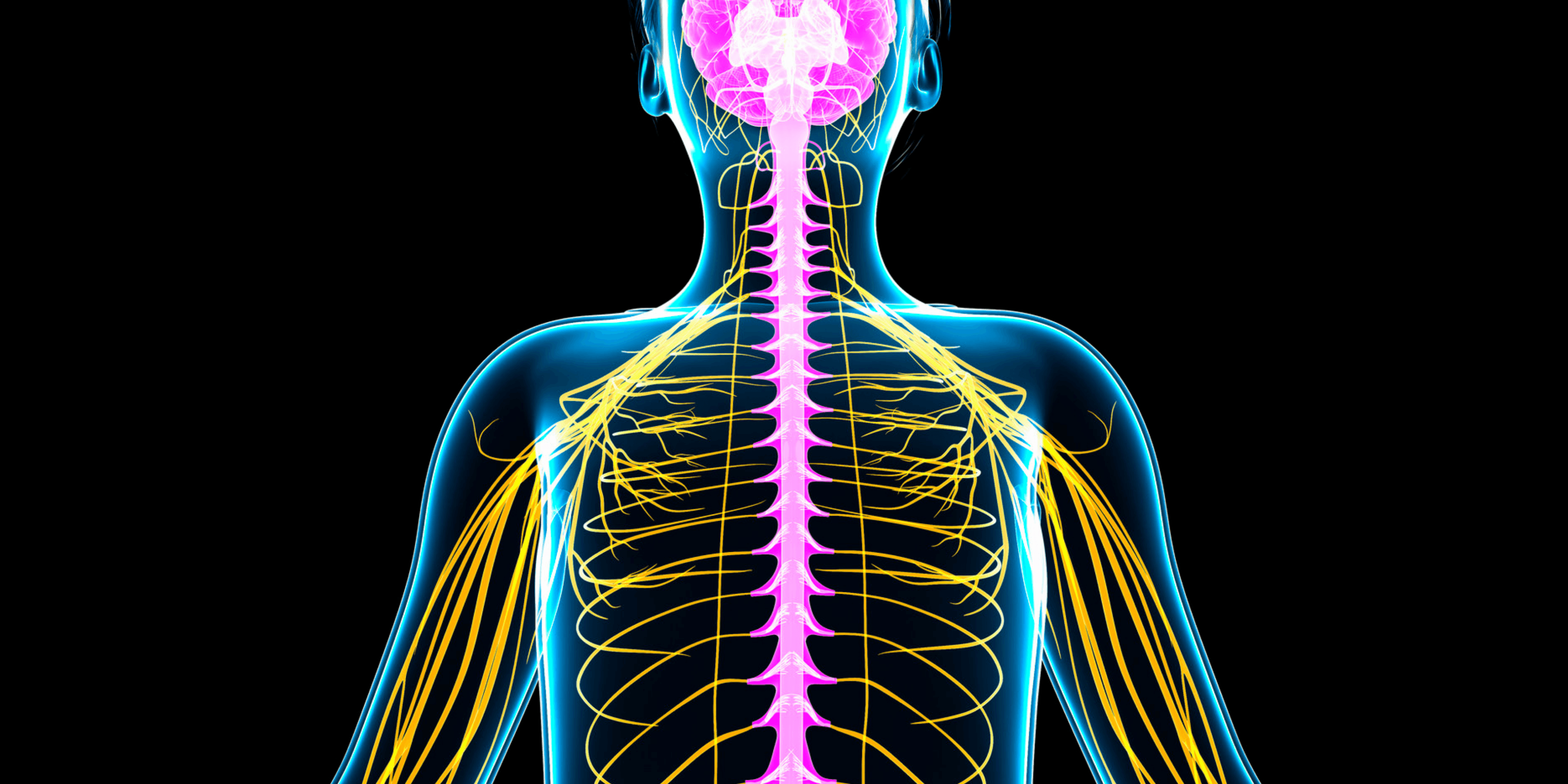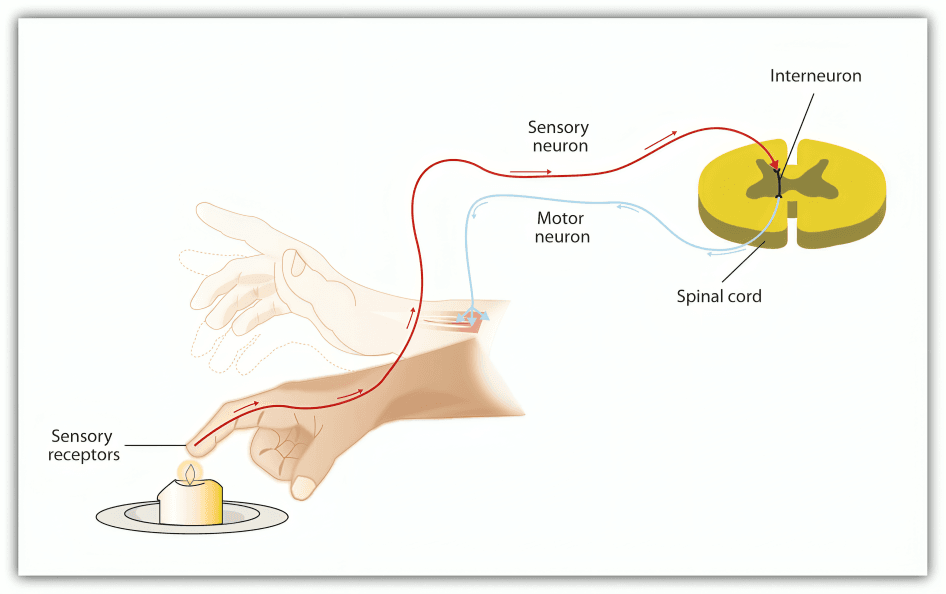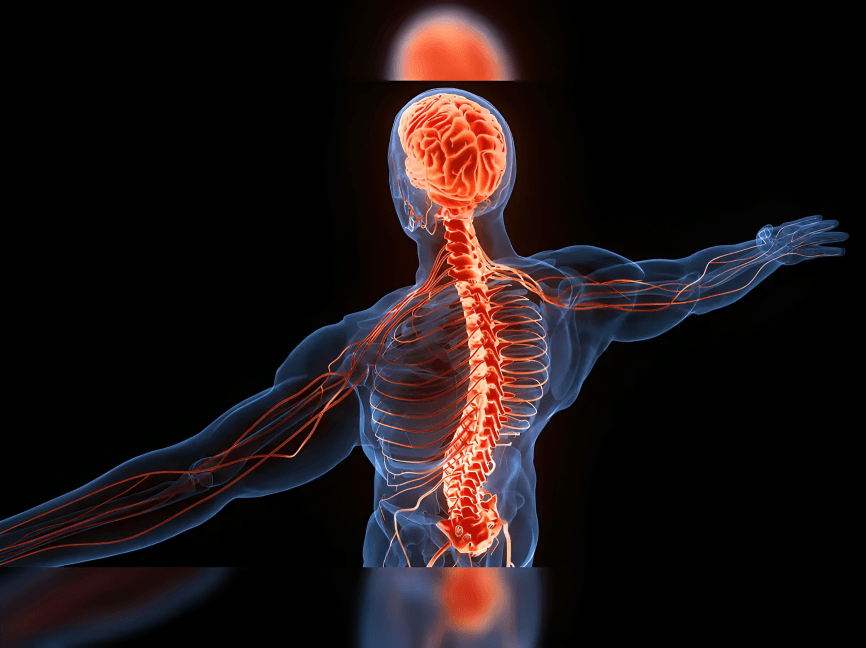
“
The spinal cord and the nervous system form the body's central communication network, transmitting signals that regulate everything from heartbeat to memory. The spinal cord acts like a highway between the brain and the rest of the body, controlling reflexes, movement, and sensation. Surrounding it, the nervous system is divided into central and peripheral branches, each with vital roles.1
1
”
Ancient Greek physician Galen studied the spinal cord, showing how damage to certain areas caused specific paralysis—laying the groundwork for modern neurological mapping and the nervous system. 1
The spinal cord is protected by the vertebral column and cushioned by cerebrospinal fluid, which acts as a shock absorber and also helps transport nutrients and eliminate waste from neural tissues. 2

Sensory neurons carry messages from the body to the spinal cord, and motor neurons return commands from the spinal cord to muscles—ensuring every action and reaction is efficiently processed.
The spinal cord is divided into 31 segments, each giving rise to a pair of spinal nerves that control specific body regions, ensuring accurate and localized communication across the body. 3
The spinal cord ends around the first or second lumbar vertebra, but spinal nerves continue as a bundle called the cauda equina, resembling a horse’s tail, which serves the lower limbs and pelvis. 4
Damage to the spinal cord can cause paralysis or loss of sensation below the affected level, with cervical injuries often being the most serious due to their effect on breathing and limb control. 5
Neurons are the functional units of the nervous system. Their long extensions, axons, carry electrical signals, and when bundled in the spinal cord, they form pathways essential for movement. 6
The myelin sheath, which covers many spinal cord axons, speeds up signal transmission. Its degeneration in diseases like multiple sclerosis slows between the brain and body. 7
The autonomic nervous system, part of the peripheral system, controls involuntary functions like heart rate, digestion, and breathing, working silently in the background to keep the body balanced. 8

The sympathetic nervous system prepares the body for "fight or flight" responses, while the parasympathetic system helps it relax, showing how the spinal cord mediates both stress and recovery.
Electrical signals in the spinal cord travel at speeds up to 268 miles per hour, faster than the world’s fastest sports car—highlighting the efficiency of human neural communication. 9
The spinal meninges—three protective membranes called dura mater, arachnoid mater, and pia mater—shield the spinal cord from trauma, infection, and pressure changes within the vertebral canal. 10
Neuroplasticity—the nervous system’s ability to rewire itself—offers hope in spinal cord injury recovery, where surviving neurons may adapt and form new connections to restore lost functions. 11
The spinal cord works closely with the brainstem, the most primitive brain region, to regulate essential life functions like breathing, heart rate, and consciousness—vital even in unconscious states. 12
Epidural anesthesia, commonly used in childbirth, is injected near the spinal cord to block pain in the lower body—demonstrating how targeted nerve interruption can provide pain relief. 13

Nerve cells in the spinal cord don’t regenerate easily, which is why spinal cord injuries are so serious. Current research explores stem cells and gene therapy to promote regrowth and healing.
Every time you move a finger, blink, or feel cold, your spinal cord transmits the signal involved. It never stops working, even during sleep, as it regulates automatic functions like respiration. 14
Electrical stimulation therapies are now being tested to activate spinal circuits in paralyzed patients—offering promise that damaged nerves may one day transmit signals again. 15
Disorders like amyotrophic lateral sclerosis (ALS) progressively damage spinal motor neurons, leading to paralysis. Studying such diseases helps uncover broader insights into neural degeneration. 16
The spinal cord’s gray matter processes information, while its white matter transmits it. This internal organization allows efficient management of countless messages traveling through the nervous system.17


